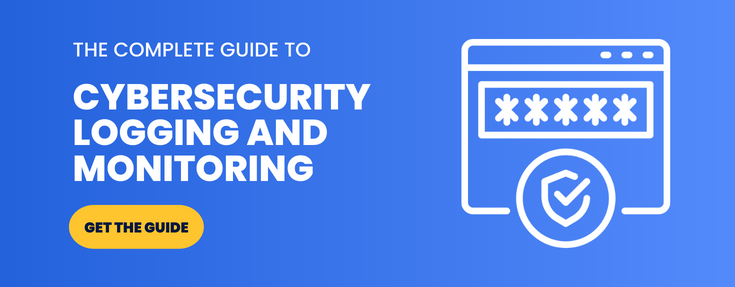Real-Time Threat Monitoring: Do You Have It?

 By
Jason Miller
·
4 minute read
By
Jason Miller
·
4 minute read
Modern businesses face more threats now than ever, and that’s primarily due to a little thing called cybercrime. Almost all companies currently store at least some information online. Thieves can gain easier and broader access to a wide array of business data and financial information. In fact, according to the Center for Strategic and International Studies, cybercrime is currently costing the global economy over $445 billion every year, with more than $160 billion of that coming from the commercial sector.
To make matters worse, these threats aren’t easy to track or quantify. While cameras or trained security personnel were once enough to keep companies safe, the same precautions do nothing to prevent criminal hacking crimes today. That’s because criminal hackers with the latest malware can breach our defenses without us knowing about it until our money goes missing or customers complain.
It’s a bad state of affairs, and all companies should take precautions to prevent. Anti-virus software is now an absolute must. In addition, all companies should have either an outsourced or in-house cybersecurity team. Even with these efforts, criminals can gain access if a company doesn’t take care of something called threat monitoring in real-time.
What is real-time threat monitoring?
For the most part, real-time threat monitoring is what it sounds like. It involves the continual monitoring of company networks or endpoints which could become access areas for hackers. That may sound simple enough, but looking into the issue proves that it’s anything but.
That’s because businesses currently face risks from viruses, malware, identity theft, worms, and web-based attacks, among others. That’s a whole load of possibility, making real-time threat monitoring a considerable task, 24 hours a day. That’s part of the reason why many companies opt to outsource threat monitoring. It’s worth noting, though, that this can bring risks of its own as outsourced companies often use their own systems and devices, leaving yet more access areas for hackers.
What are the benefits of real-time threat monitoring?
While the online business climate looks this risky, it seems like staying offline is the only way to keep safe. While that is true, it’s simply not possible. But, real-time threat monitoring can go at least some way toward providing safety benefits and peace of mind.
Real-time threat monitoring can help companies identify threats which might otherwise go unnoticed. Even better, the real-time aspect means that businesses can spot potential threats as and when they arise to ensure that they never become problems. Done right, a reliable threat monitoring policy can ensure that a company:
- Has knowledge of who is using networks, why, and whether activity poses any risks
- Understands data regulations in accordance with current network usage
- Monitors sensitive data at all times in keeping with data compliance
- Finds vulnerabilities straight away and is able to fix them
Of course, anyone who has been working to prevent cybercrime risks understands all too well that hackers are continually changing the type of threats businesses have to deal with. The moment the world gets out about one malware, criminal hackers will release another, which requires an entirely different approach. This way, criminal hackers can gain access while IT security experts are busy dealing with an existing problem. With continual real-time threat monitoring, you ensure that you never leave avenues of access open, no matter which security issues hit your business.
Are you implementing threat monitoring within your company?
Even if you’ve never heard the precise term ‘threat monitoring’ before, there’s a chance that you’re already using real-time threat monitoring methods within your company. That’s because many of these methods are now common sense business necessities. If you’ve never explicitly aimed your efforts here before, though, it’s worth asking yourself whether your company has the following threat monitoring capabilities right now.
Cybersecurity-based staff training
Staff training and security have always gone hand in hand. But, instead of procedures such as silent alarms and video monitoring, security training in any industry should now focus on matters of cybersecurity. There’s simply no way that your team can monitor threats if you don’t properly train them in what those threats might be. This training could be anything from data protection regulations to potential scams and malware. Either way, you need to know that your team can both monitor for and spot potential cybersecurity breaches at all times.
24-hour cybersecurity monitoring
It wouldn’t be real-time threat monitoring if it stopped come nightfall, would it? The fact is that cyber threats never end and nor should monitoring practices. At least, not if you want to protect your company the way that you should. In an ideal world, a business needs to implement a 24 hour monitoring plan, meaning that they’re able to act as soon as a breach threatens. Obviously, paying security personnel through the night can get pricey, hence why many business owners turn to MSSP who offer ongoing monitoring like this for one set monthly fee.
Response plans
Of course, your threat monitoring capabilities are only as good as your response plan. It won’t do you any good to continually tracking for signs of a breach if you have no real idea of what you would do when you found one. As such, the last and arguably most crucial threat monitoring implementation is a response plan. A robust cybersecurity response plan involves both a knowledge of the risks and an understanding of which tasks fall to each team member in the instance of a threatened breach. Again, outsourcing can be a huge help as MSSPs have the best tested and reliable responses available.
Whether you take care of cybersecurity in-house or outside of it, threat monitoring is the best way to keep ahead in this ever-changing risky cyber world. It’ll certainly go a long way towards proving to potential customers that they can put their trust and confidential information in the hands of your company.
Our services aim to provide you with a simple no-nonsense solution to keep your business safe from online threats. If you’d like to learn more, don’t hesitate to get in touch with us today to speak to one of our friendly representatives.
We’ll help explain the services we offer and how they can be customized to your exact needs.

